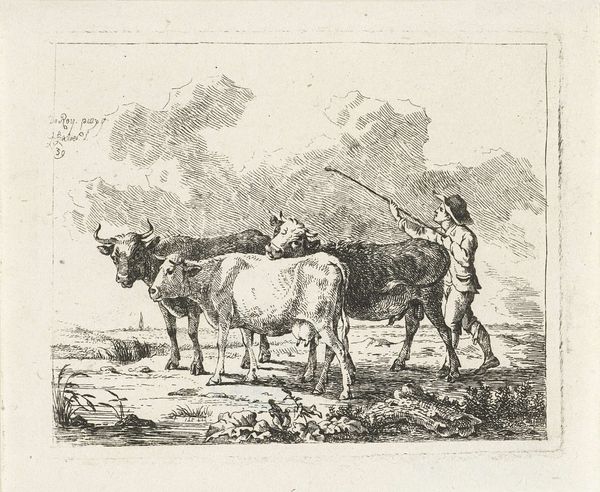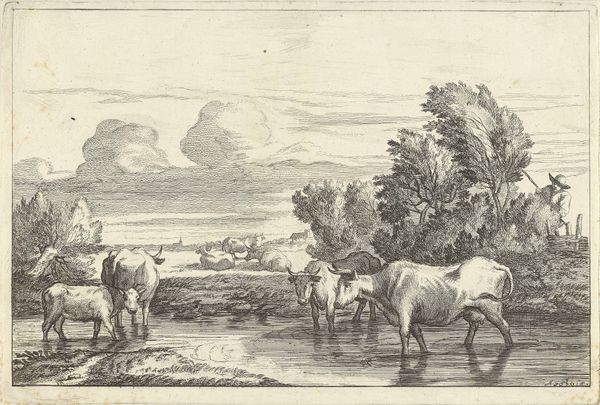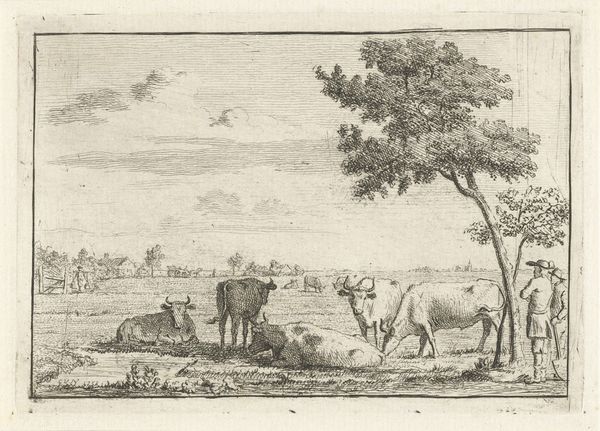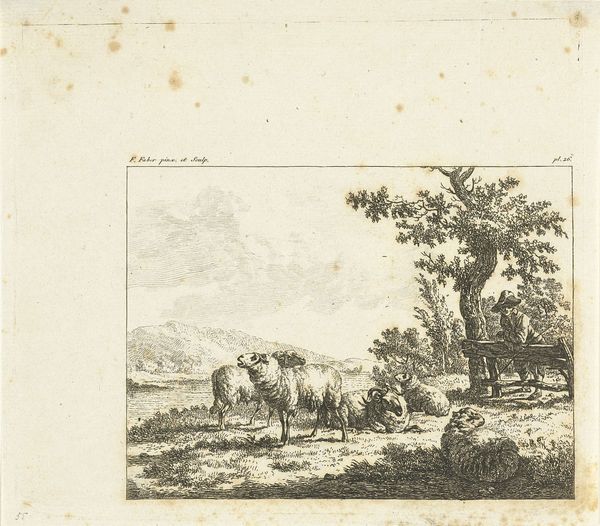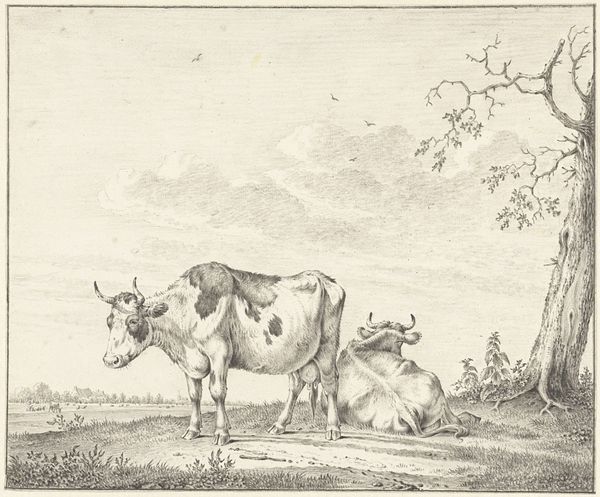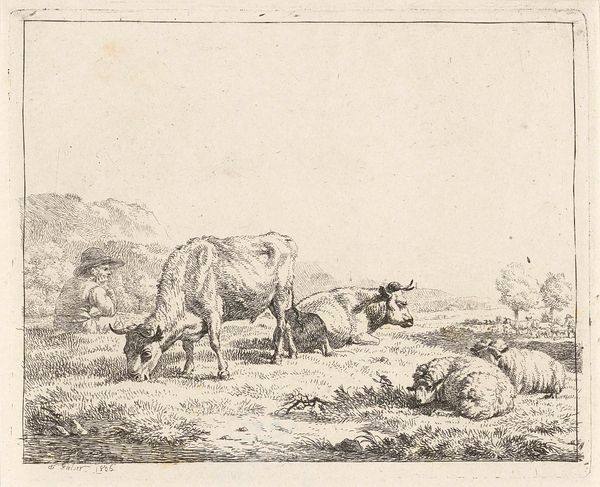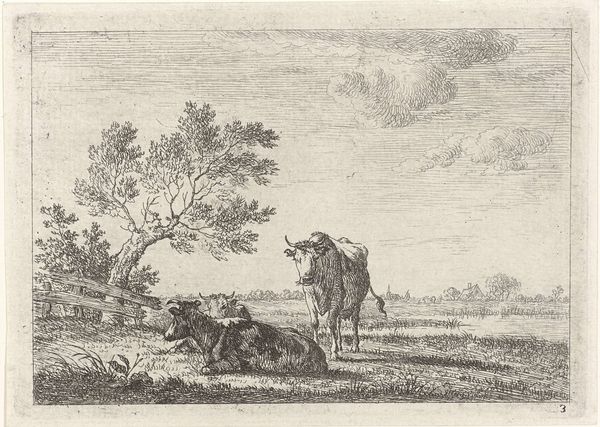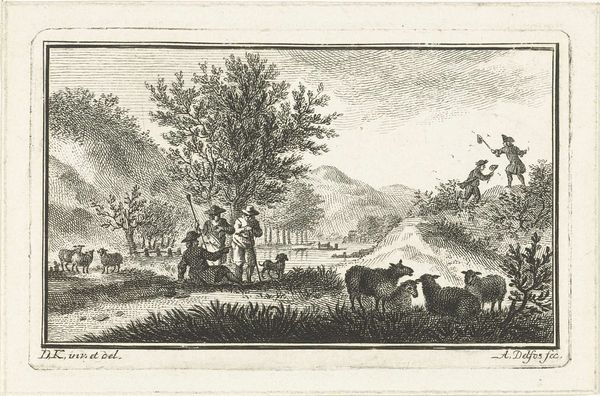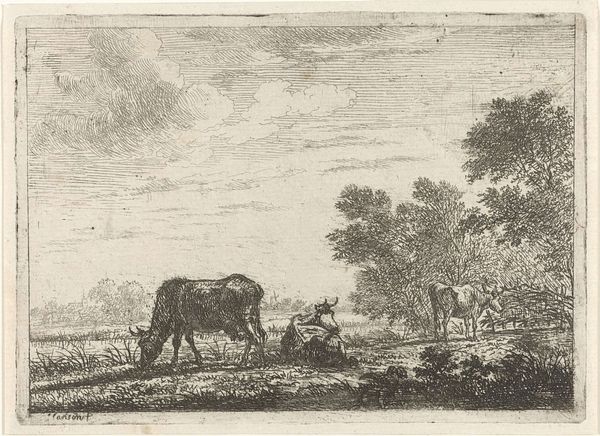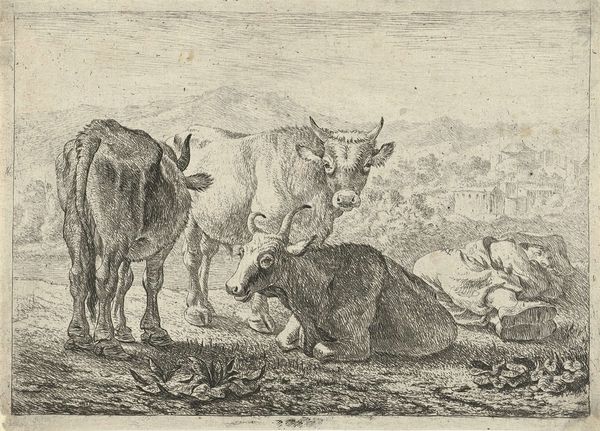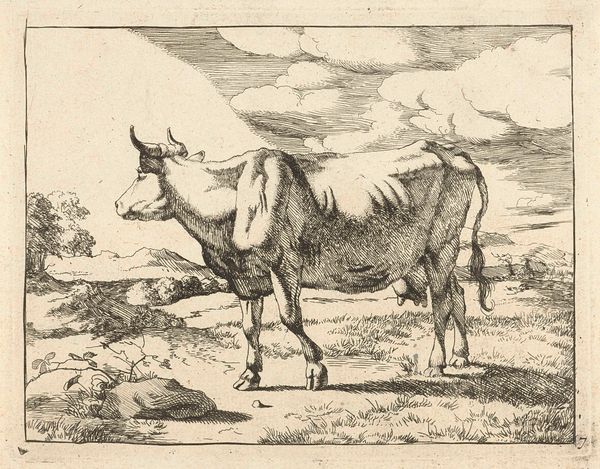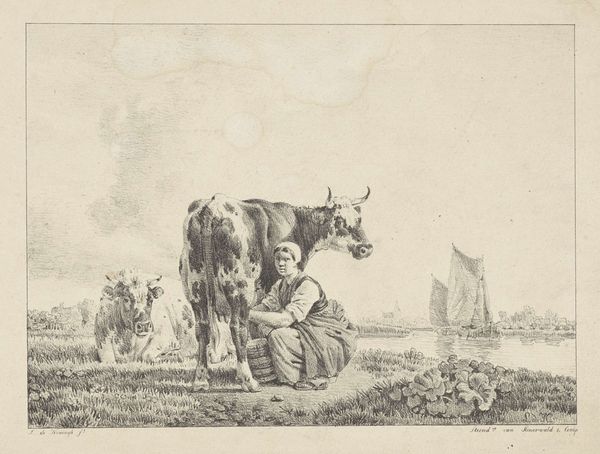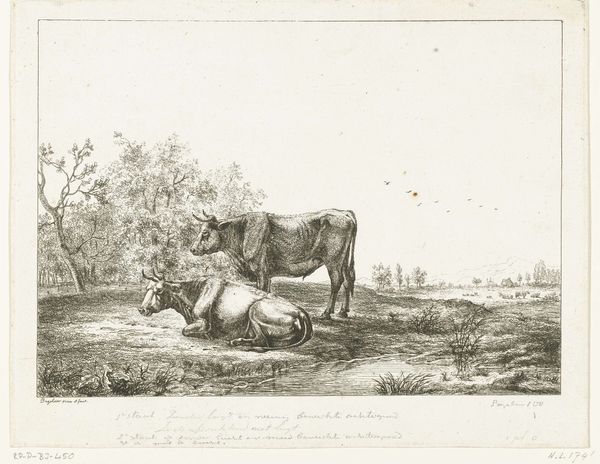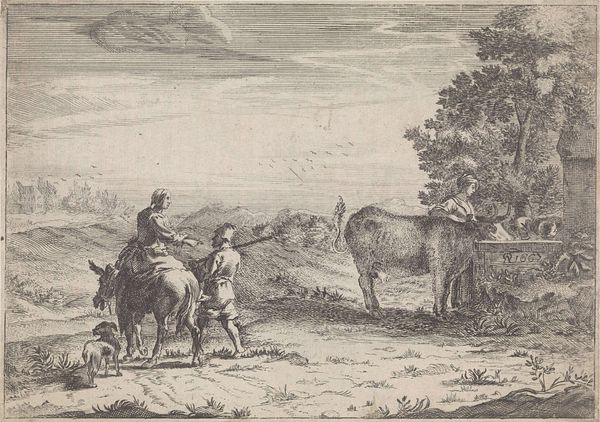
#
comic strip sketch
#
aged paper
#
light pencil work
#
old engraving style
#
sketch book
#
personal sketchbook
#
sketchwork
#
sketchbook drawing
#
storyboard and sketchbook work
#
sketchbook art
Dimensions: height 220 mm, width 293 mm
Copyright: Rijks Museum: Open Domain
Editor: So, this is "Voordeel van de Hollandse neutraliteit," or "The Benefit of Dutch Neutrality," from 1745. It’s an engraving, unsigned, but assumed to be Dutch. It looks like a political cartoon, and my initial impression is one of satire, maybe with a touch of cynicism. What historical context am I missing in order to fully interpret it? Curator: Excellent observation about the satirical tone. Let's unpack the historical moment. This piece emerges during the War of the Austrian Succession. Consider the word "neutrality" as a loaded term here, masking the economic and political positioning of the Dutch Republic. Look closer, what’s being extracted and by whom? Who benefits from "neutrality," and at whose expense? Editor: It looks like the Dutch are milking a cow, while France and England are preoccupied. It seems to suggest that the Dutch are profiting from the conflict between these powers by staying neutral. Is that a correct assessment? Curator: Precisely! But let's push that further. This imagery speaks to broader debates about trade, colonialism, and exploitation. It's important to consider how this supposed neutrality might be enabling, even profiting from, the violence inflicted elsewhere by these major powers. The “milk,” if you will, is not just economic benefit, but also implicated in wider systems of power. Where do you see gender at play here? Editor: I hadn’t considered that, I'm not sure I see gender in any meaningful way. Curator: Consider how nation-states are gendered in political cartoons such as this. Think of it not literally but symbolically. Who is being acted upon? Who is passively benefitting, and who is in control? Editor: This reframing adds a whole layer to it. The Dutch Republic, is coded as passively benefiting, almost like an exploitative caretaker, or perhaps an unsupportive, unwilling collaborator, simply looking to take any benefits as the others suffer. I'm starting to see it much more critically. Thank you. Curator: Indeed, and these are the important questions art should provoke – revealing complex power dynamics in seemingly simple narratives. It's a lens through which we understand how the art history intersects with our lived realities.
Comments
No comments
Be the first to comment and join the conversation on the ultimate creative platform.
